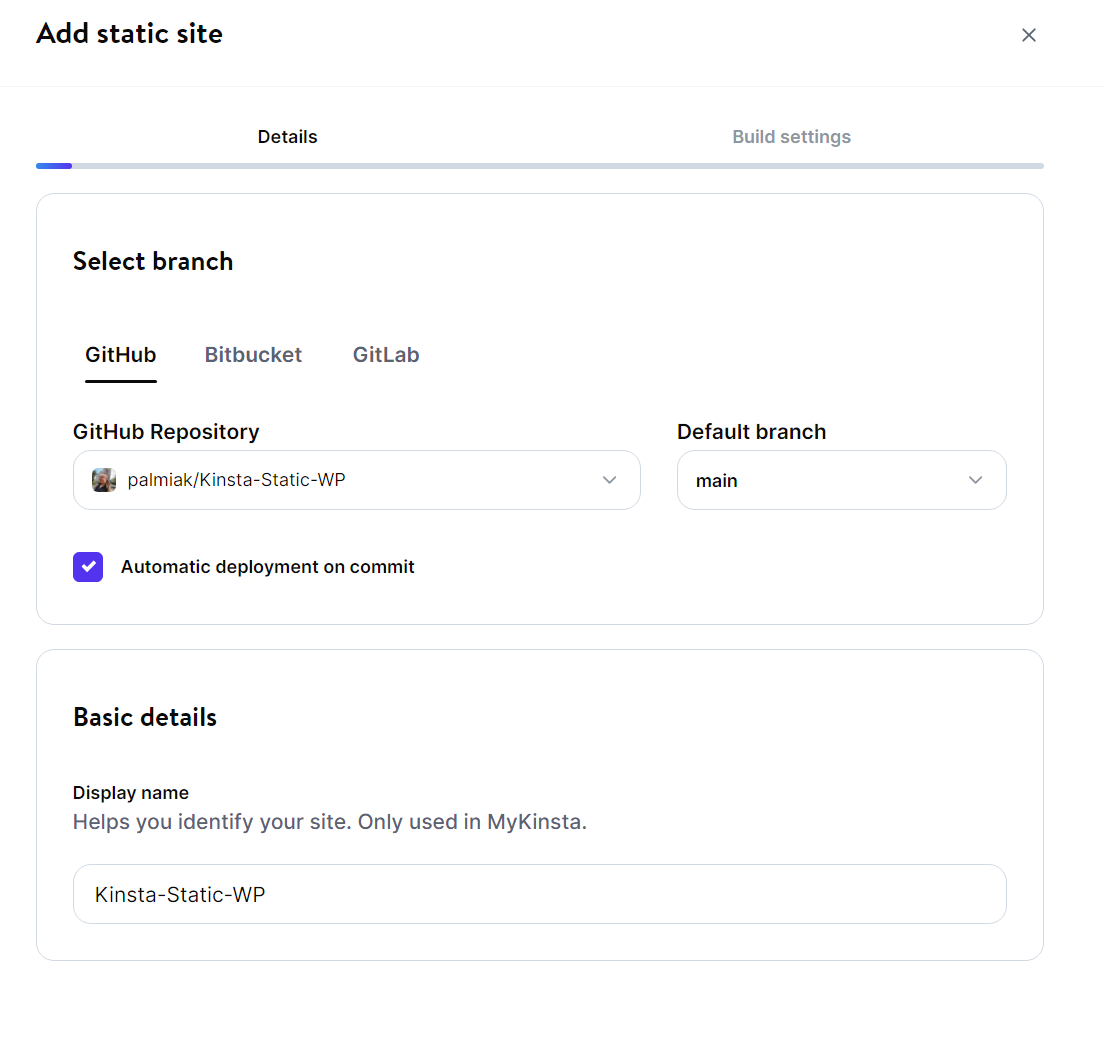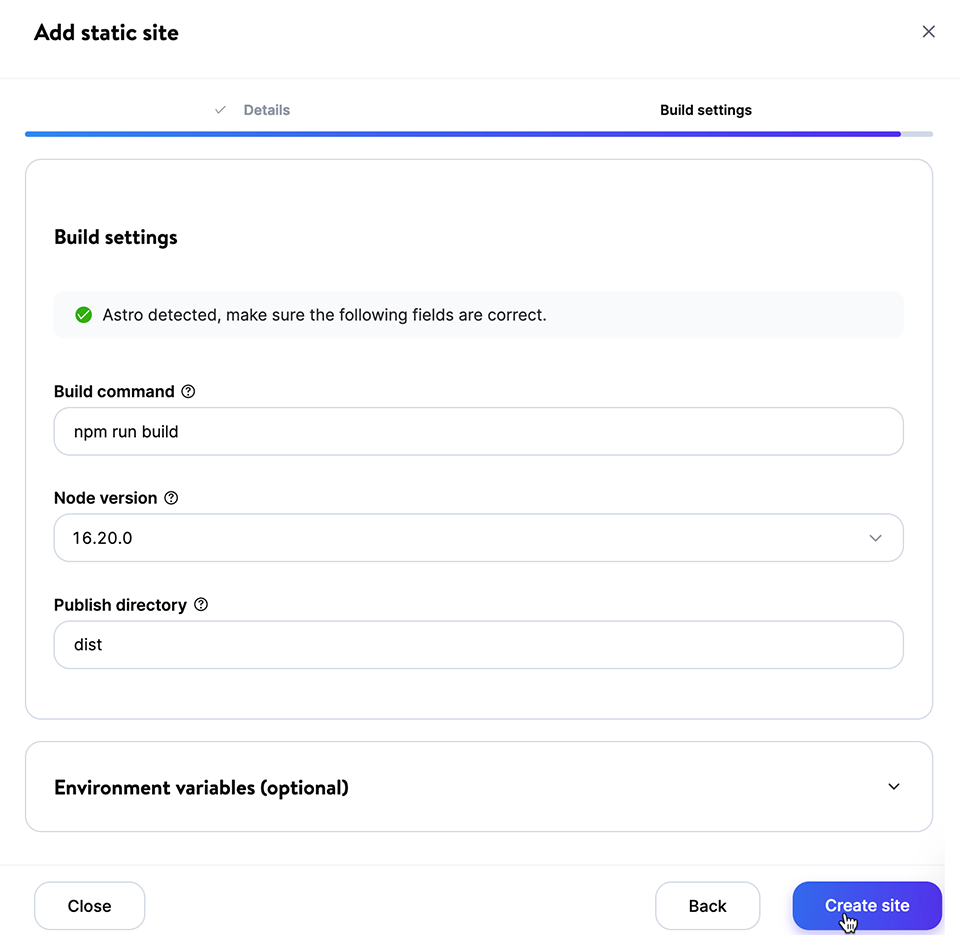Kinsta launched its static site hosting product today, making a strong entrance into the market with a free tier that is competitive with established solutions from Vercel, Netlify, and GitHub Pages. Companies can host up to 100 static sites for free, including static WordPress sites, which Kinsta deploys from its global edge network of more than 300 locations.
Static sites are those that serve HTML pages, media, and assets like JavaScript and CSS. These are usually more suitable for brochure websites, landing pages, personal portfolios, and other simple sites that don’t require pages to be dynamically generated by code running on a server. Static sites are generally more performant and secure.
Kinsta’s free static hosting tier comes with the following features and limitations:
- 1 concurrent build/site
- 100 sites/company
- 600 build minutes/month/company
- 100 GB bandwidth/month/company
- 1 GB build size limit/site
- API access
- Integration with GitHub, GitLab and BitBucket
- Diff-based Uploads
- Custom domains
- Free SSL support
Customers can host pre-built static sites or sites built with static site generator frameworks that use Node.js. Kinsta has created quick start example repositories for many popular static site generators, including Astro, Cuttlebelle, Docusaurus, Eleventy, Gatsby, Nuxt, Qwik, React, React with Vite, and VuePress.
WordPress users can also deploy static sites to the platform and host it for free by converting an existing site to static. Kinsta published a tutorial on the process for converting a WordPress site using a free plugin. The static hosting can also be used to set up a frontend with any kind of backend or host a headless WordPress site.

Users can launch a static site to Kinsta’s infrastructure by deploying from a Git repository hosted by BitBucket, GitHub, or GitLab, selecting a branch, and adding a build command and directory to deploy. Kinsta can detect some static site generators automatically, which makes the process easier. A connection and configuration settings can be managed through the MyKinsta dashboard.

Kinsta plans to introduce add-ons and other features in the future that might be paid, but is committed to keeping the service and this tier free forever.
“Just like with every free product or freemium model, our goal is to spread the word with the help of it and let users try out our service, the dashboard in a frictionless way and host a project here for completely free,” Kinsta Chief Business Officer Tom Zsomborgi said.
“The ability of using and testing out a platform and getting first hand experience is the ultimate way of forming an opinion about a provider. We let everyone use the service and host their projects. If the developers and agencies like the Static product we hope they will consider us for their other web projects and start using the paid services.”
Kinsta is targeting enterprises, agencies, and companies that need to create websites and landing pages for high-traffic campaigns. The company is working on more features for static site hosting, including the following on the roadmap:
- Wildcardless domains
- Extended Kinsta API support
- Serverless functions, which could be utilized by static sites
- Previews
- Maintenance mode
- Password protection
- Ability for HTML Forms to work
- More builders
- Choose a build template
- Detailed Analytics
Kinsta’s static site hosting solution is similar to what the competition offers for building and deploying sites, but Zsomborgi said he thinks that having application, database, and WordPress hosting all under one roof sets them apart. Kinsta also offers analytics for free and unlimited users/seats, the same as Vercel, but Netlify only offers these under paid plans.
“The biggest things that we are missing are functions (Vercel, Netlify, and Cloudflare Pages have them) and deploy previews,” Zsomborgi said. “Both of those are in the backlog and will be released soon.”
